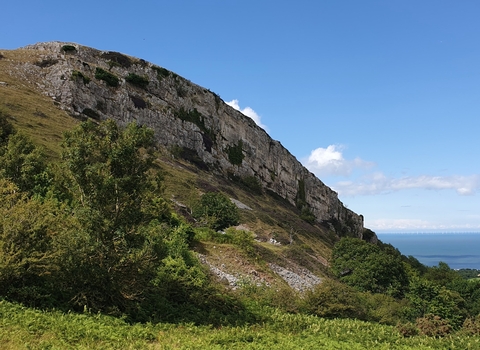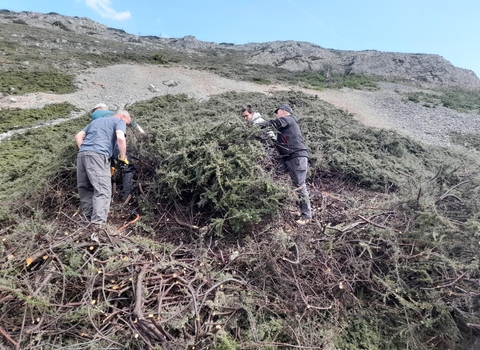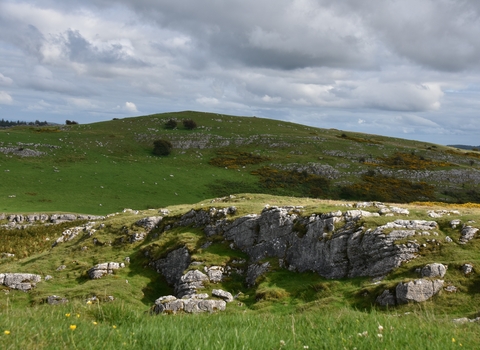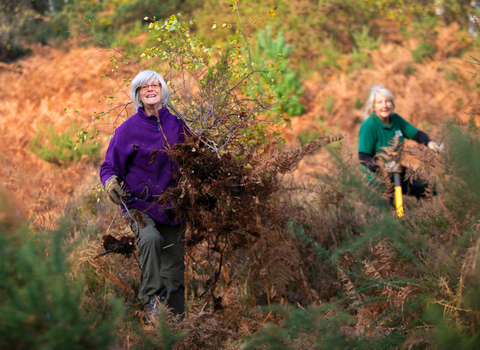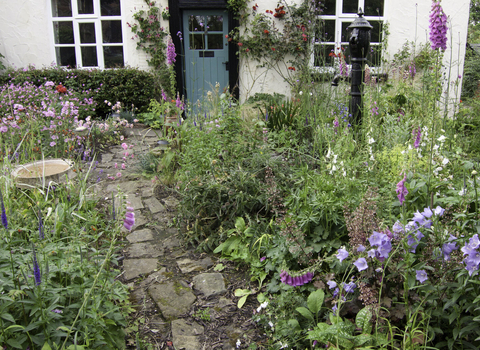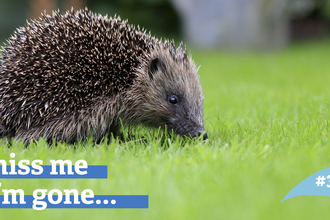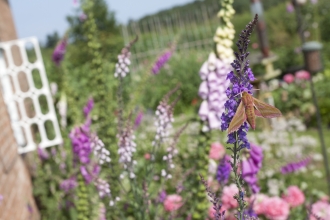Helpwch i ddiogelu glaswelltiroedd calchfaen bregus yng Ngogledd Cymru
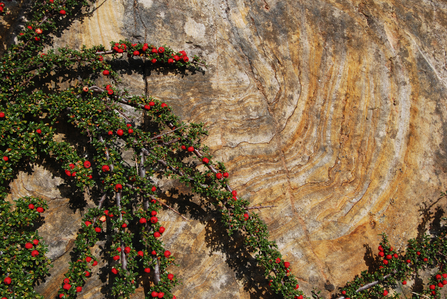
Cotoneaster © Lin Cummins
Ymunwch â ni i helpu i achub ein glaswelltiroedd calchfaen sydd dan fygythiad rhag creigafal estron ymledol. Wedi’i gludo i’r DU yn y 19eg ganrif fel planhigyn gardd, mae bellach wedi’i nodi ymhlith y deg rhywogaeth uchaf sy’n cael effaith negyddol ar safleoedd dan warchodaeth yng Nghymru.
Os na chaiff ei reoli, gall achosi newid parhaol i'n tirweddau lleol gan gael effeithiau dinistriol ar fywyd gwyllt. Mae aeron yn cael eu gwasgaru'n hawdd gan adar sy'n achosi i greigafal ymledu'n gynyddol, am y rheswm yma, mae'n rhaid i ni weithredu nawr!
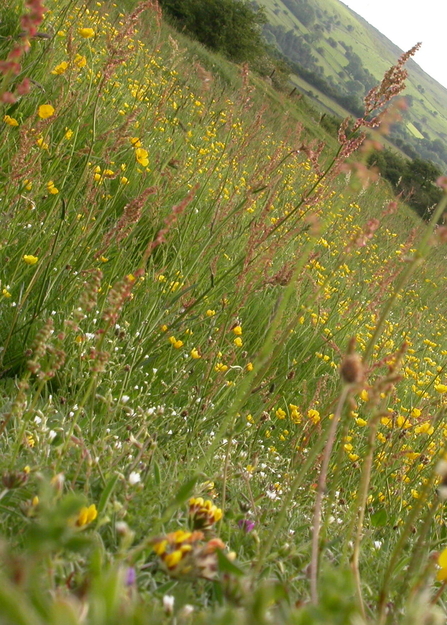
Limestone grassland ©Philip Precey
Pam ydym ni eisiau gwarchod glaswelltiroedd calchfaen?
Wrth i'r dyddiau fynd yn hirach, dylai glaswelltiroedd calchfaen fod yn gyforiog o liw. Casgliadau helaeth o flodau yn cynnwys y clafrllys bach, plucen felen, ysgallen Siarl, y cor-rosyn a’r bwrned. Bydd tegeirianau cain y wenynen a bera yn cael eu harddangos ochr yn ochr â theim, ysgall di-goes a’r bengaled. Bydd digonedd o löynnod byw, gan gynnwys y gweirlöyn cleisiog, yr argws brown a’r glesyn serennog, yn ymweld am eu ffynhonnell gyfoethog o neithdar.
Yn anffodus, nid yw hyn yn wir am lawer o’n glaswelltiroedd calchfaen. Mae blodau a fyddai, ar un adeg, wedi bod yn eu blodau’n llawn wedi cael eu mygu a'u trechu gan greigafal, gan reoli’r ardaloedd eang o laswelltir a oedd unwaith yn ffafriol. Yn anffodus, mae 90% o’n glaswelltiroedd lled-naturiol wedi prinhau ers yr 20fed ganrif, ac mae’r ardaloedd sydd ar ôl bellach yn aml yn fach o ran maint ac yn dameidiog iawn, gan gael effeithiau dinistriol ar ein bywyd gwyllt lleol. Er mwyn helpu i warchod ein cynefinoedd hoff, rhaid i ni weithredu dros fyd natur.
Rydyn ni’n credu y byddai glaswelltiroedd calchfaen yn diflannu o’n tirweddau yn golled enfawr, a gall cael pobl i ymwneud â’u gwarchod yn lleol fod o fudd gwirioneddol – i unigolion, cymunedau yn ogystal â’n bywyd gwyllt!
Beth rydyn ni'n ei wneud?
Mae Ymddiriedolaeth Natur Gogledd Cymru wedi derbyn grant Cronfa Dreftadaeth y Rhwydwaith Natur i gyflwyno’r prosiect Adfer Glaswelltiroedd Calchfaen. Rydym yn gyffrous i barhau â gwaith gwych y gwirfoddolwyr a’r partneriaid sy'n ymwneud â phrosiect Rheoli Creigafal Gogledd Cymru i reoli cael gwared ar greigafal.
Nod y prosiect yw;
• Cynnal arolwg pellach o ledaeniad a helaethrwydd creigafal ar draws Gogledd Cymru
• Blaenoriaethu pum safle dan warchodaeth sydd angen eu rheoli fwyaf
• Adfer glaswelltir calchfaen ar ôl trin creigafal
• Codi ymwybyddiaeth o effaith creigafal ar dreftadaeth naturiol trwy deithiau cerdded sain tywys
North Wales Cotoneaster Control (https://www.youtube.com/watch?v=fslA8HDtMa0)
North Wales Cotoneaster Control
Ymunwch â Hannah, ein Swyddog Prosiect Adfer Glaswelltiroedd Calchfaen, i archwilio sut mae prosiect rheoli creigafal Gogledd Cymru wedi gadael gwaddol ar gyfer ein cenhadaeth barhaus.
Questions or want to get involved? Contact us
Hannah Everett, Cotoneaster Project Manager
Identify the most dominant and invasive species of cotoneaster
Cotoneaster species are listed on the Schedule 9 to the Wildlife and Countryside Act 1981 England and Wales. Although still readily available to buy, it can be planted and contained in private gardens. However it is an offence to plant or otherwise cause these species to grow in the wild. GBNNSS
Entire leaved cotoneaster (C. integrifolius)
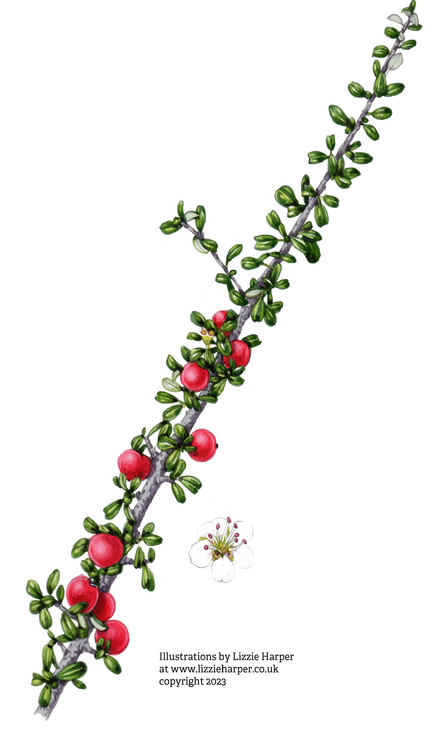
©Illustrations by Lizzie Harper at www.lizzieharper.co.uk copyright 2023 Entire leaved Cotoneaster (C. integrifolius)
- Evergreen low growing shrub
- Leaves: small elliptical, dark green and hairs underside
- Flowers: white, purple anthers
- Berries: late summer crimson colour, holds throughout winter
Himalayan cotoneaster (C. simonsii)
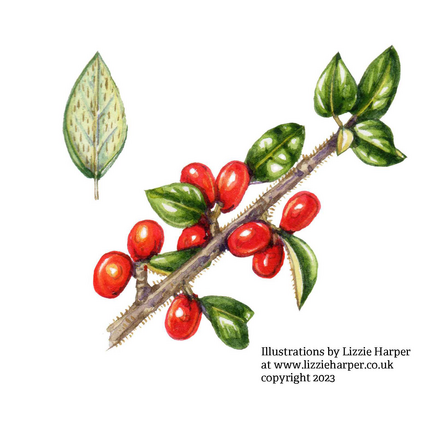
©Illustrations by Lizzie Harper at www.lizzieharper.co.uk copyright 2023 Himalayan cotoneaster (C. simonsii)
- Large hardy upright evergreen shrub
- Leaves: small none serrated, alternate along stem, glossy hairless upper and slight hairs on lower surface
- Flowers: pale pink, red patch centre of petal
- Berries: slightly larger, orange-red in clusters
Hollyberry cotoneaster (C. bullatus)
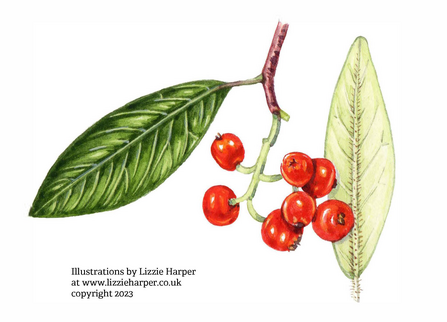
©Illustrations by Lizzie Harper at www.lizzieharper.co.uk copyright 2023 Hollyberry cotoneaster (C. bullatus)
- Much larger deciduous shrub up to 4 metres
- Leaves: matt green, oval and pointed, indented veins growing alternate on stem
- Flowers: pink, 5 petal, white anthers
- Berries: bright red, large slight square-shaped
Small leaved cotoneaster (C. microphyllus)
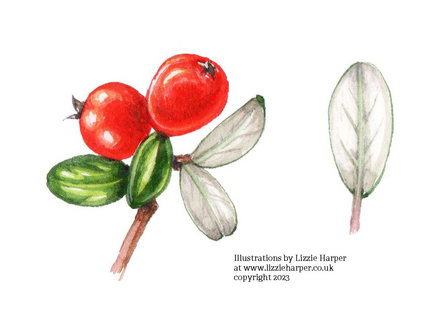
©Illustrations by Lizzie Harper at www.lizzieharper.co.uk copyright 2023 Small leaved cotoneaster (C. microphyllus)
- Evergreen low-lying shrub
- Leaves: glossy green top, grey/white underside, small (1cm length), elliptic
- Flowers: solitary white, 5 petals, dark violet anthers
- Berries: coral red and globular
Wall cotoneaster (C. horizontalis)
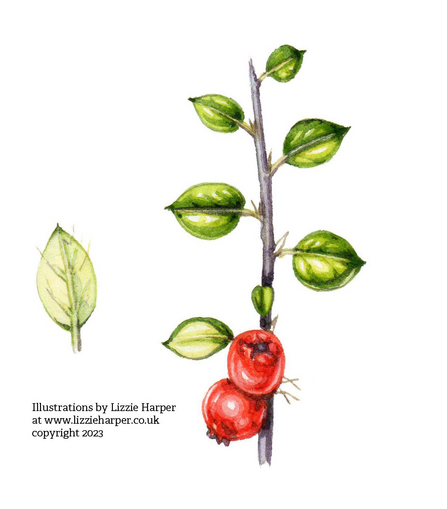
©Illustrations by Lizzie Harper at www.lizzieharper.co.uk copyright 2023 Wall cotoneaster (C. horizontalis)
- Deciduous low growing shrub: herringbone-shaped branches, stems woody dark brown, hard and knotty
- Leaves: small dark green upper, pointed and shiny on both sides, red in autumn
- Flowers: pink, 5 petal with white anthers
- Berries: orange-red
Dyma ganllaw defnyddiol i "Garddio heb blanhigion ymledol niweidiol" gan gynnwys llwyni yn lle creigafal (tudalen 30) i gadw’ch gardd yn fwrlwm o fywyd.
Mae Ysgrifenyddiaeth Rhywogaethau Estron Prydain Fawr wedi creu cynnwys defnyddiol - "Tips for gardeners to Be Plant Wise" - ymgyrch i helpu i ddewis beth i'w dyfu, sut i atal ymlediad planhigion ymledol a chompostio'n ofalus ar ôl eu symud.
Record your invasive non-native species sightings, surveys and management on INNS Mapper. Sign up via the link or download the app! It's free to use, providing resources to support INNS programmes to coordinate efforts across England, Wales and Scotland.

®Lottery Heritage Fund in partnership with Welsh Government
Mae’r prosiect hwn yn cael ei gyllido gan y Rhaglen Rhwydweithiau Natur.
Mae’n cael ei gyflwyno gan y Gronfa Dreftadaeth, ar ran Llywodraeth Cymru.

